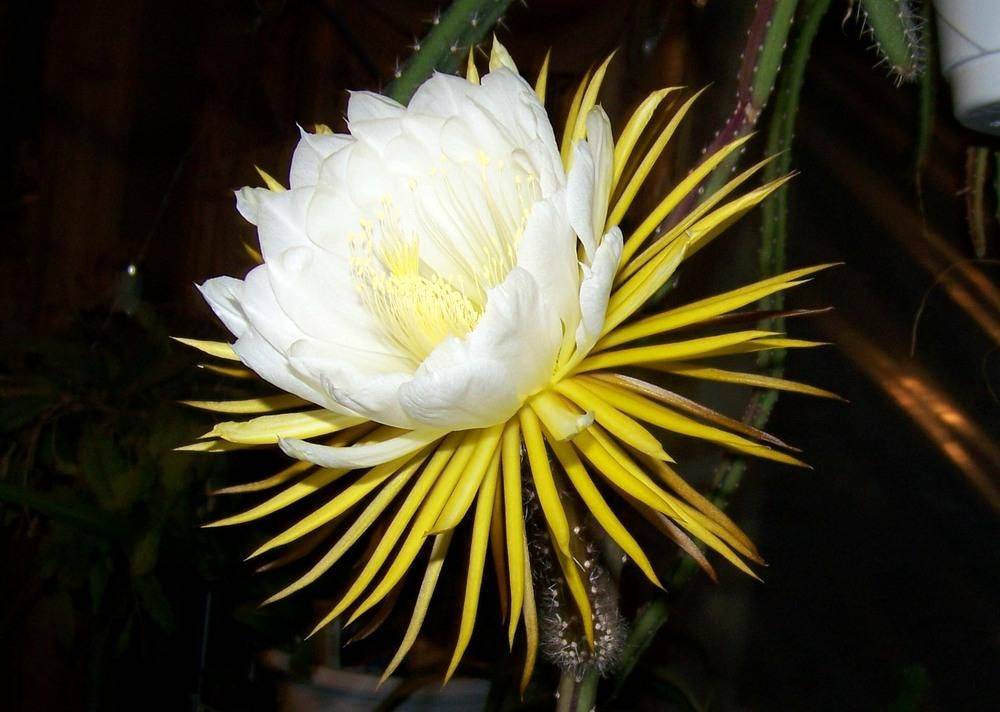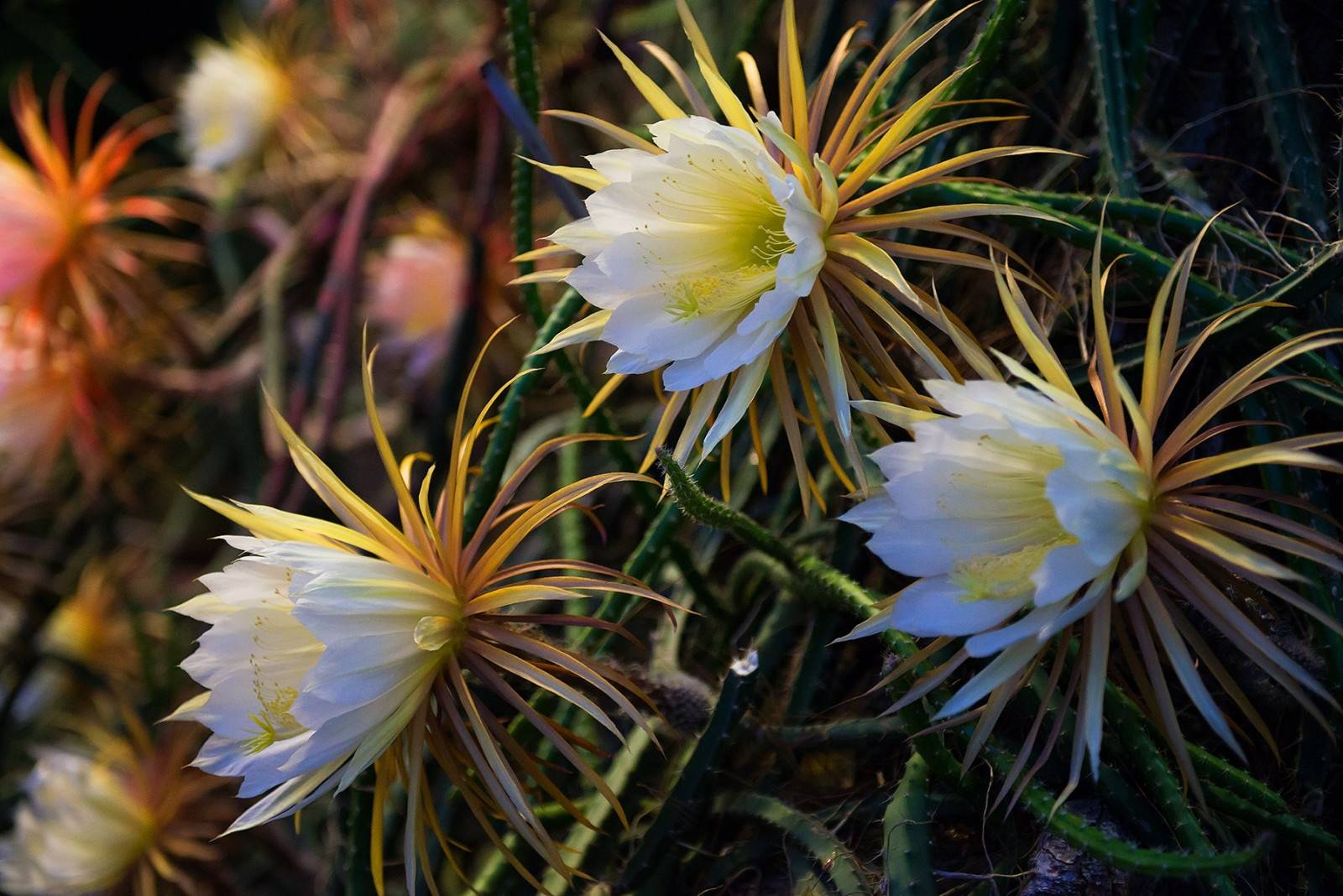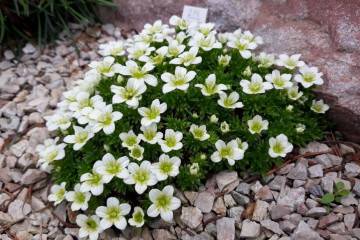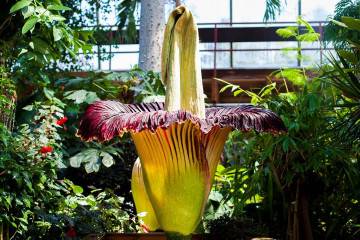Selenicereus grandiflorum - home care
Content:
Selenicereus large-flowered has an unusual appearance. Huge fragrant flowers immediately attract attention. A cactus like this is not easy to keep at home, but the result is worth it.
What does Selenicereus grandiflorum look like?
Selenicereus cactus as a variety includes 25 species. They grow in India and America. Stems are spreading or curly, capable of tangling into balls. Ribs can be knobby or wavy. The spines often reach a length of 18 mm. Sometimes the cactus will release aerial roots.
The trunks are covered with a small pile of silver or white. The flower is worthy of special attention.
The flower reaches 30 cm in diameter, its color is white and it smells of vanilla. In nature, after pollination, fleshy fruits appear.
Some varieties
- Validus (Selenicereus Validus) reaches a length of 70 cm, flowers are white or creamy.
- Hamatus (Selenicereus hamatus) is distinguished by hook-shaped processes. Scientists are still arguing whether this species was bred artificially or it occurs in nature.
- Chrysocardium is capable of reaching a length of several meters. Therefore, it is very difficult to keep it indoors. Better to choose the grandiflora (selenicereus grandiflora), which is not so gentle and quivering.
- Another major representative is the pteranthus. It can grow up to several meters in length.
- Selenicereus Wercklei is not that big. The diameter of its stems reaches 2 cm, and the flower is no more than 16 cm.
Different varieties of cactus allow you to enjoy the unusual representatives of the species. Large-flowered, usually called Selenicereus Grandiflorus. They have predominantly white flowers surrounded by small narrow yellow stamens.
Ms. McDonald's Selenicereus is not a separate cultivar, but this does not diminish its uniqueness. Selenicereus Macdonaldiae has a long history. Since 1824, it has been grown in the greenhouse of St. Petersburg and during its life it has experienced various events. Even during the blockade of Leningrad, the employees managed to save it. Selenicereus MacDonald and other plants are still open to visitors. It is enough to come to the botanical garden and enjoy the thematic exhibitions.
Care features
It is difficult to keep this type of cactus at home. But with proper organization of care, the plant can still bloom and this will enable the owner to enjoy the beauty of the specimen.
Ingredients of proper care:
- Temperature - about 18 ° С, slight fluctuations are permissible, but there should be no sharp jumps.
- Lighting - diffused light for at least 12 hours a day.
- Watering - between waterings, the soil should dry out to the middle. It's easy to check - they pierce the ground with toothpicks in several places, and then pull it out. If there are no lumps of soil on them, then it is dry.
- Selenicereus does not need spraying.
- Soil - must be loose and well-drained. For its preparation, they take 60% of the universal soil and 40% of perlite. The components are mixed and used to plant the plant. Bark or expanded clay is added as drainage.
- Top dressing - special products are used for cacti and succulents.
The life of the plant and its flowering depend on the care.
Conditions for winter
Cacti and succulents need a dormant period. It is organized from mid-autumn to spring. At this time, the air temperature is lowered and the number of waterings is reduced.
Validus, Antonianus and other varieties need the same care. During the dormant period, you can not make top dressing, transplant the plant and somehow disturb it. The optimum temperature during this period is 15 ° C. The earthen lump should dry completely between waterings.
In early April, Selenicereus begins to gently wake up. To do this, gradually increase the temperature and increase the number of waterings.
Bloom
Selenicereus begins to bloom in May and continues to bloom until June. Flowers quickly fade and bloom at night.
This time is popular with visitors to the botanical gardens. They are in a hurry to see unusual representatives and enjoy their beauty.
Reproduction
Breeding the selenicereus cactus is rather difficult. At home, this is done by seed or by rooting the shoots. With the right approach, you can get new copies of the plant.
Seeds
The seed can be harvested after flowering. For this, the flowers are pollinated with tassels and wait for the formation of fruits. They are carefully collected and cut. Inside there will be seeds that are washed and dried.
The soil for sowing is selected as standard. The seeds are planted to a depth of 1 cm and covered with glass or foil. In a mini greenhouse, they will germinate faster. After the sprouts reach a height of 3-4 cm, they are seated in separate pots.
Rooting
In spring, you can prune selenicereus. The length of the cutting should be at least 10 cm. The cut site is dried or sprinkled with crushed charcoal. Such a stalk cannot be placed in water.
You can additionally cover the pot with a jar or bag - this will create a greenhouse effect. During this period, it is important not to make too high a level of air humidity, as this will negatively affect germination.
In selenicereus, rooting is not so fast and you have to be patient.
Transfer
A young plant needs an annual transplant. Up to five years, the cactus is actively growing and the pot quickly becomes cramped for it. Therefore, they change it in the spring before flowering.
An adult cactus is transplanted every three years. Frequent soil changes are contraindicated as it is stressful for the plant.
Diseases and pests
The description of the varieties does not convey all their beauty. But in order for the selenicereus to please the owner longer, certain conditions are created for him. If not properly maintained, the cactus will hurt.
With insufficient watering, a spider mite or scale insect appears - it is easy to identify it by a brown bloom. Pests are eliminated with the help of insecticides, which are sprayed on the plants and shed the soil.
With improper care, the cactus begins to rot. This happens when the humidity level is high. In this case, the affected shoots are removed, and the plant is transplanted into new soil.
Sometimes a strange spotting is noted in Selenicereus. With her, incomprehensible spots appear on the stems. The reason for their development is unknown. You can try treating with fungicides.
Selenicereus requires special care, but in the end it will delight you with magnificent flowering. It is not often found in the homes of Russians, but those who have taken up the cultivation of an unusual succulent are definitely proud of their indoor plant.



















